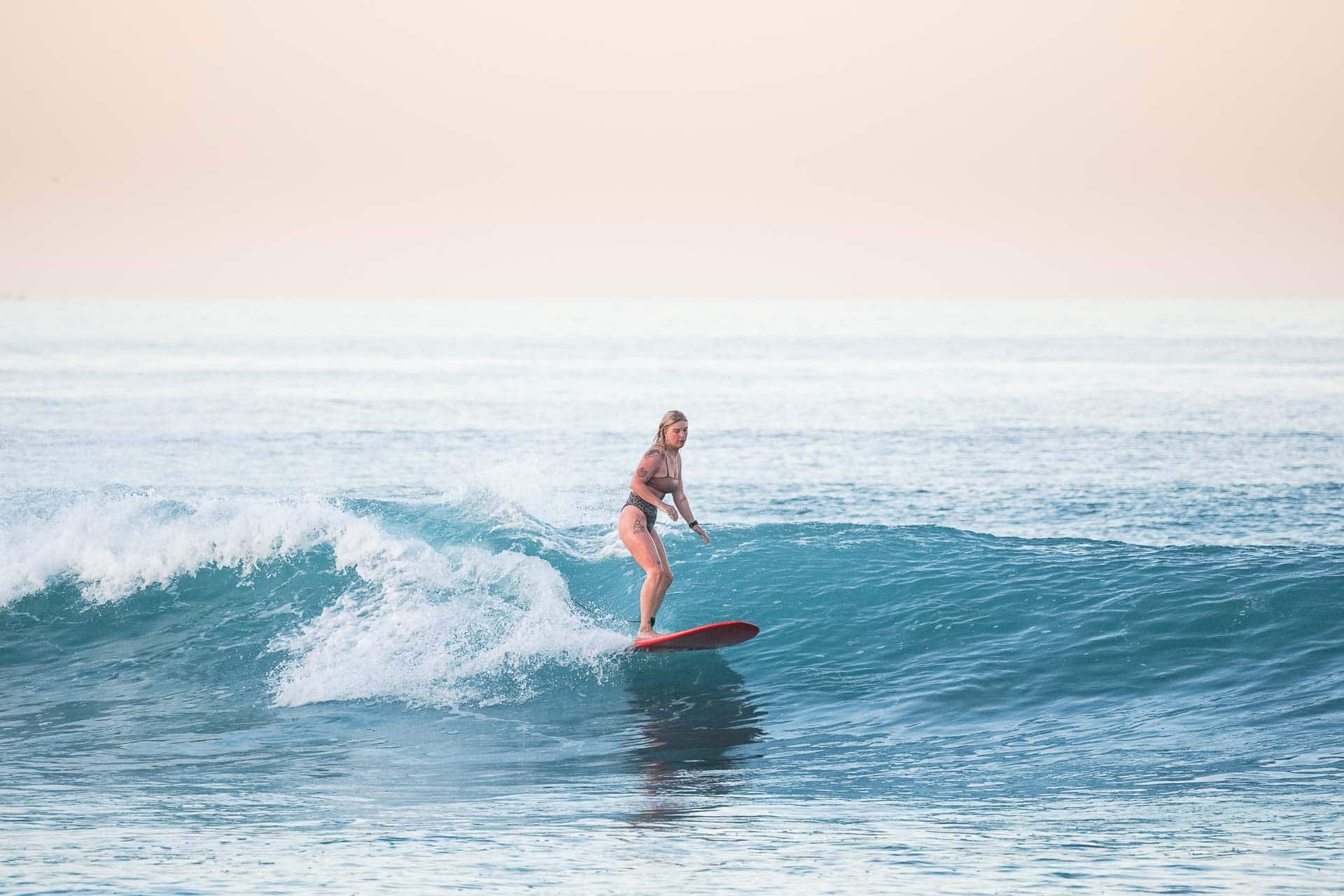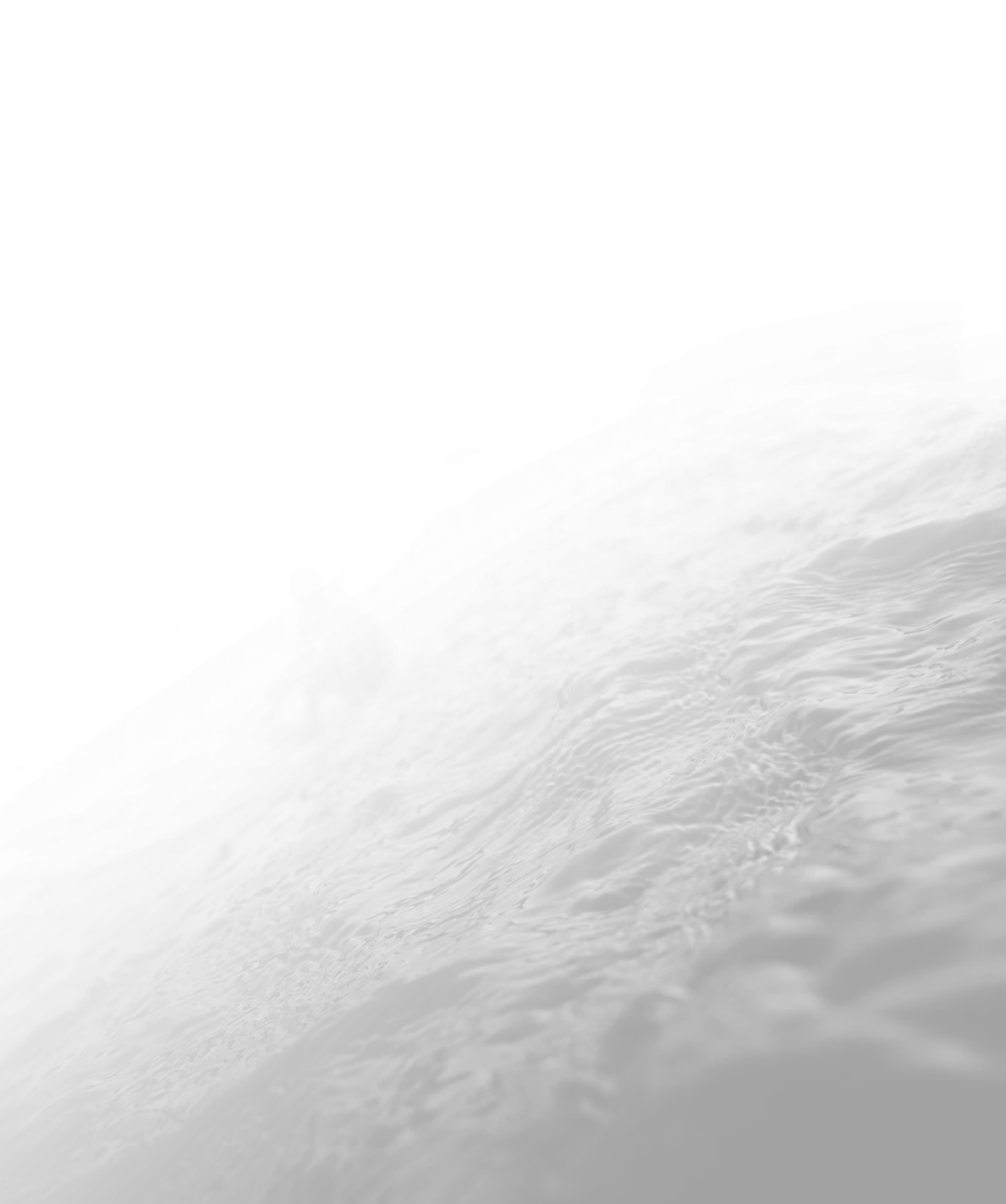If you want to learn to surf in Bali but aren’t too keen on crowded waves, check out our latest article and discover how to score a few epic sessions with only a handful of people.
Everyone loves learning to surf in Bali – and for good reason. It picks up plenty of swell, there are waves for all skill levels, the nightlife is next level and the food is cheap and delicious. In short, Bali is a guaranteed good time.
The problem, however, is that when we say everyone loves learning to surf in Bali, we actually mean it. With close to 5 million visitors every year and a good chunk of tourists who are learning to surf for the first time, the beaches and reef breaks can get a little crazy.
Luckily for you though we have a few tips to help you navigate the crowds at the best learn-to-surf beaches in Bali.
So, the next time you paddle out for one of your very first surf sessions on the Island of the Gods, you’ll be able to do so with only a handful of other clued-up surfers.
1. Wake up for an Early Morning Session

Setting your alarm to go off before the unapologetic Balinese roosters start crowing is one of the best ways to avoid crowds.
Just think about it. Nobody likes getting up early on their island holiday. With many people opting for the extra shuteye (because that’s what some vacations are for) while the partygoers simply can’t fathom facing the world after their fourth consecutive night out in Kuta, there aren’t going to be many people out there surfing.
Even lifelong surfers still regard the early morning surf session with a curious mix of skepticism and resentment depending on how the forecast looks. But if you’re totally devoted to making the most of your learn-to-surf trip to Bali, there really is no better option.
There are fewer people in the water for you to contend with, allowing you to rack up a solid wave count. The roads will be quiet and void of traffic so you can enjoy a relaxing ride to the beach. You’ll also get to park right in front of your favourite break and paddle out just in time to witness the sunrise over the mountains. Not bad, right?
2. Steer Clear of the Busiest Parts of the Beach
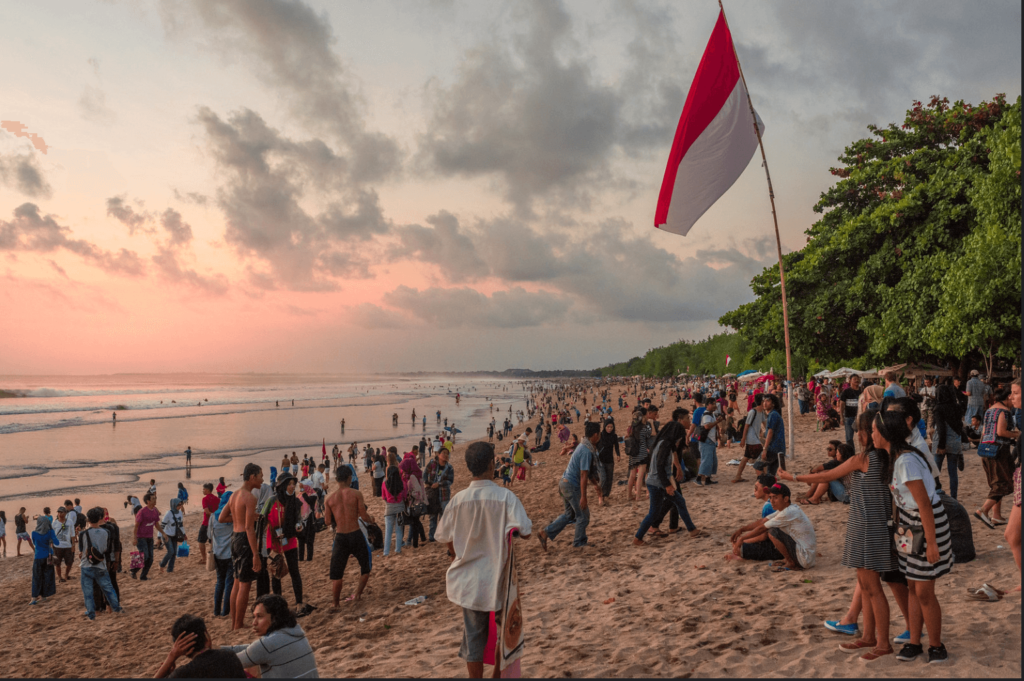
This one nearly goes without saying, but it’s worth repeating if this is your first surf trip to Bali and are still somewhat unaccustomed to just how busy the beaches can get during the high season.
Always look to surf away from the busiest sections of a beach. Seriously, there are so many other great places for beginners to surf as opposed to the main parts of Legian, Kuta, and Canggu that there’s really no excuse to simply paddling out where everyone else is and joining the crowd.
Of course, you should only learn to surf in Bali in areas that are safe to do so. But often you can walk less than 100 meters up or down the beach away from the crowds and find a decent wave to practice on. Gives you the dual benefit of being able to catch waves in the vicinity of other people without actually having to cross paths with them.
Another advantage of surfing away from the crowds is that you won’t have to fret about getting in the way of other surfers. Allowing you to focus on getting in rhythm with the ocean and perfecting your technique with the peace of mind knowing that you’re free to paddle into any wave you want.
3. Keep an Eye on the Conditions at All Times
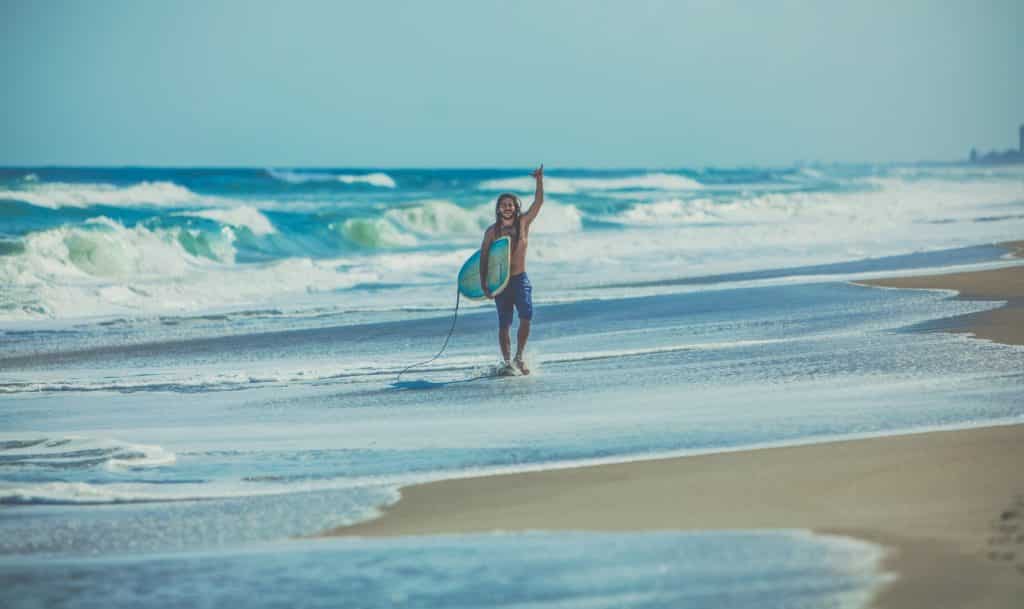
The wind could change and start blowing offshore. The tide could switch and reveal a super user-friendly sandbar. Even the swell can pick up in a matter of minutes and turn a lineup that looks a bathtub into a veritable playground for beginner surfers.
What we’re saying here is that the conditions can and do change all the time. Often contrary to what the surf forecast sites are saying, too. The best way to learn to surf in Bali then is to always keep an eye on the conditions. Paying close attention to factors such as a lull in the wind, multiple waves breaking in the same position, or an increase in wave size.
By regularly checking the surf you’ll be in a better position to act quickly when the conditions begin to improve. Ensuring you can beat the vast majority of people to the waves and get a few solid rides totally solo before all the other surfers start to realize the surf is cooking.
4. Surfing Right before Dusk
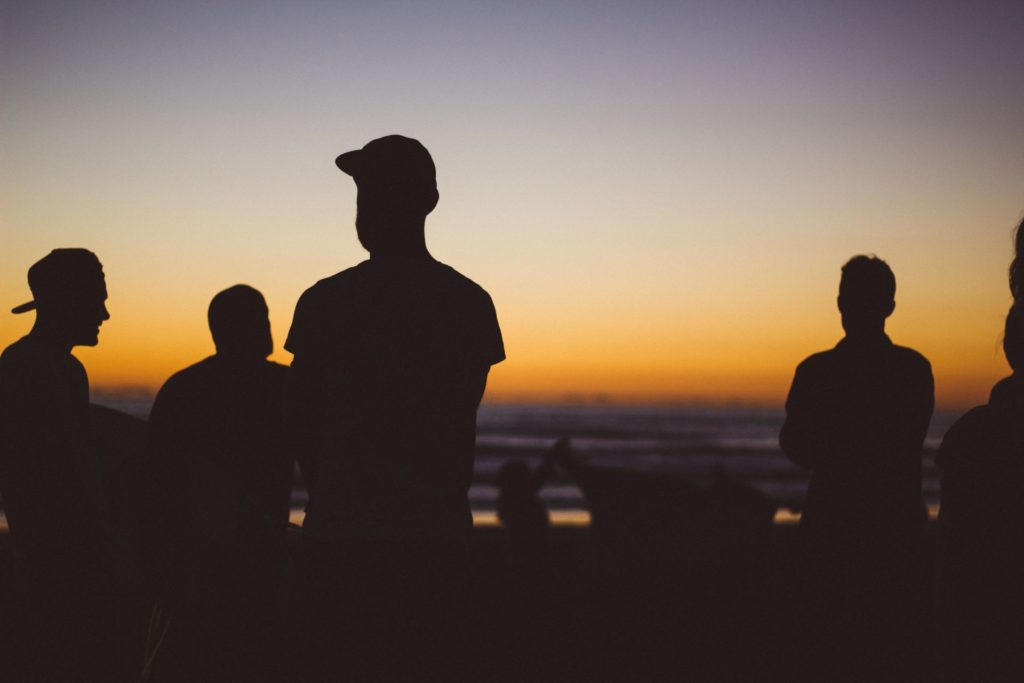
Another way to learn to surf in Bali but avoid the crowds is to wait until roughly an hour before sunset and then paddle out. Also known as a dusk session, surfing during this time is popular amongst those who prefer empty lineups for a number of reasons.
The main one, however, is the fact that after a solid afternoon slogging away against the current and frolicking beneath the unforgiving Balinese sun, most surfers are too wrecked to bother with one last paddle around as dusk approaches and unwilling to resist the lure of an end-of-day Bintang any longer.
This ensures the lineup will begin to gradually clear out the closer you get to sundown. Gives you a brief window of opportunity to catch a few waves amongst saltwater zombies who can barely take a single stroke more. An ideal situation for you to put those well-rested limbs to work and surf without too much of a crowd.
5. Don’t Shy Away from Exploring New Waves
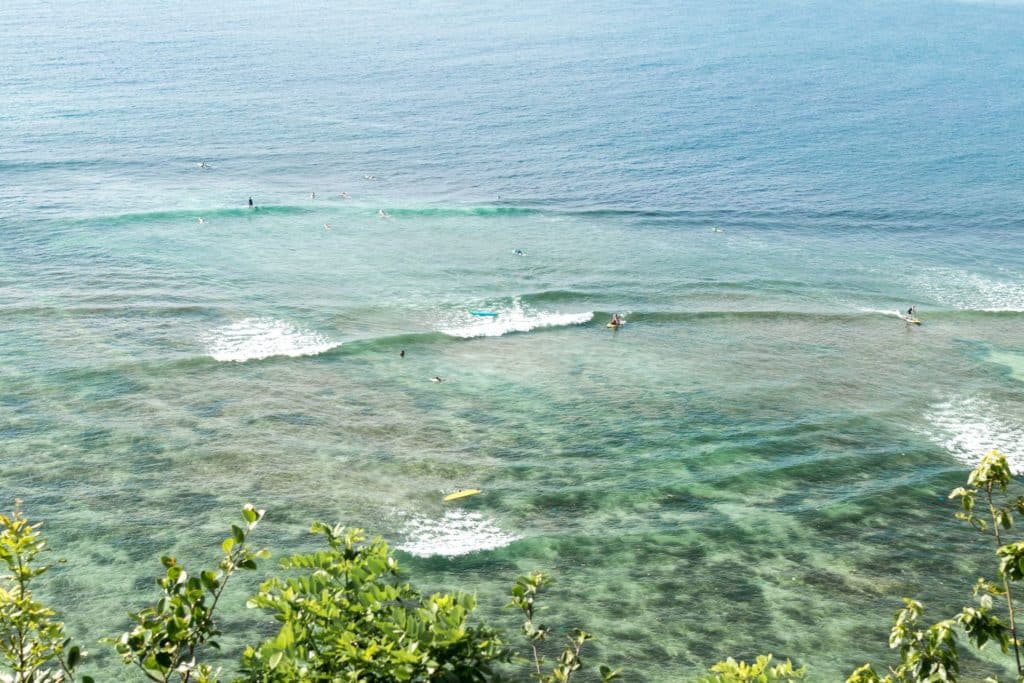
If you really want to avoid the crowds in Bali and have already mastered the basics of surfing, grab your board, book your transport, and hit the road to explore some of the island’s more secluded waves.
Beyond our Green Bowl and Padang Padang surf camps, there are countless other places to learn to surf in Bali to check out. With numerous spots up and down its southeast and southwest coast that are perfect for the adventurous intermediate intent on surfing with only a select few other people.
Places such as Medewi and Balian, for example, are surprisingly beginner-friendly and are often significantly less crowded than other beaches located closer to Bali’s tourism epicentre. They also offer you a chance to kick back in a bucolic setting surrounded by good waves, smiling local graziers, and herds of doe-eyed cows.
However, before you go exploring, make sure to consult a local or a surf guide to ensure your safety.
So what are you waiting for, book your surf camp in Bali now!
Hear What Rapture Surfcamps’ Guests Are Saying:
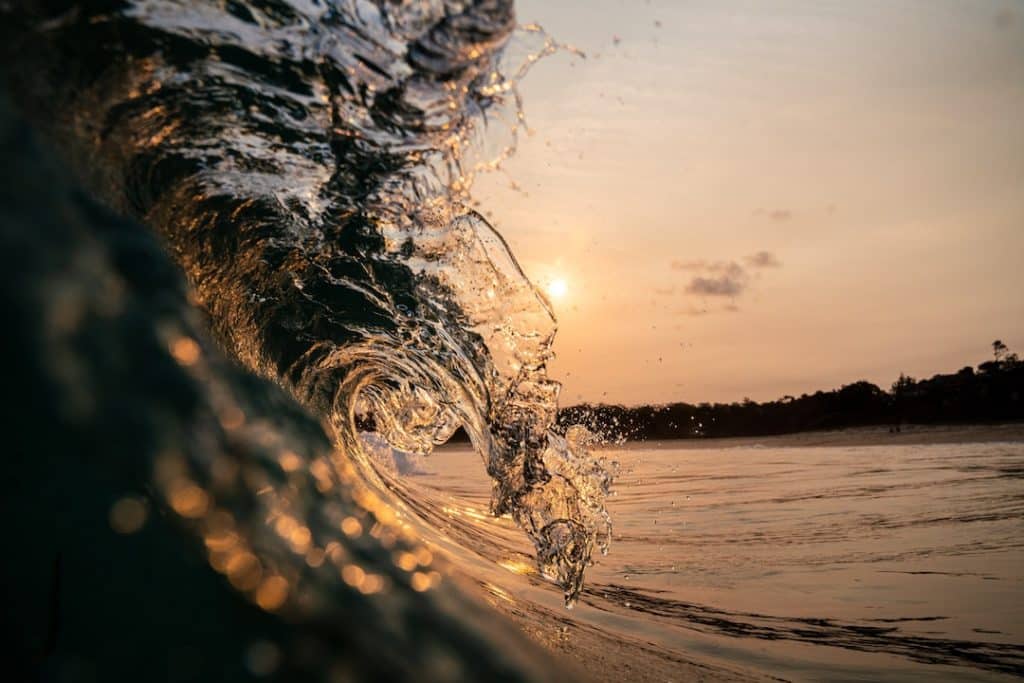
Bali is a guaranteed good time BALI
Book a stay at either our Bali Cliff or Bali Padang surf camps for an unforgettable Indonesian surfing experience that’ll keep you coming back year after year.
CONTACT US NOWFAQs About Surfing In Bali
Yes, Bali offers a variety of surf breaks, and it is possible to find less crowded spots, especially if you explore beyond the well-known tourist areas or if you visit during the wet season when tourists are less.
Some surf spots known for fewer crowds include Nusa Dua, Serangan, and Medewi. These locations provide a more tranquil surfing experience compared to the busier spots like Kuta or Uluwatu.
Surfing during the shoulder seasons, which are typically April to May and September to October, can offer a better chance of finding uncrowded waves. Avoiding the peak tourist season from June to August is also advisable.
Early mornings are generally the best time to find uncrowded surf spots. Many surfers prefer dawn sessions when the winds are calm, and the beaches are quieter.
Consider exploring surf spots during weekdays when the local and international crowds are usually smaller. Additionally, visiting less famous breaks and being willing to travel a bit farther from the main tourist areas can lead to quieter sessions.
Yes, some surf camps in Bali cater to those seeking a more secluded and personalized surfing experience. These camps often choose less crowded surf breaks, offering a more tranquil and intimate setting for surfers.
Surfing without crowds allows for a more enjoyable and relaxed experience. Surfers can focus on their skills, catch more waves, and fully appreciate the beauty of Bali’s coast without the hustle and bustle.
Yes, there are local surf guides in Bali who are familiar with the less crowded surf breaks. Hiring a guide can provide valuable insights into the best times and locations for a more secluded surfing experience.
Intermediate surfers looking for less crowded breaks might enjoy spots like Balangan, Bingin, or Dreamland. These breaks often attract fewer beginners and offer a good balance of waves for intermediate surfers.
